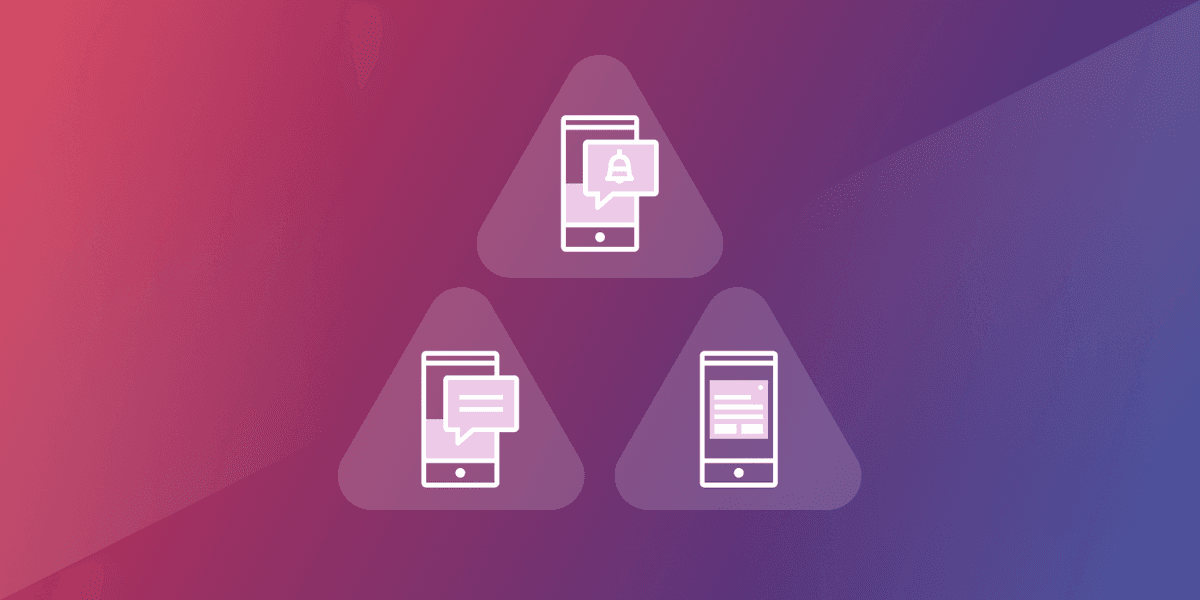Four Key Things To Look For From Your Push Provider
Published on April 07, 2020/Last edited on April 07, 2020/5 min read


Team Braze
Push notifications are powerful. In an increasingly distracting landscape, these messages make it possible for brands to cut through the noise and speak effectively to their users, whenever and wherever. Research by Braze has found that users sent push notifications see 191% more engagement than users who received no messages, underscoring the positive impact that this channel can have on your customer engagement strategy.
But to see those kinds of results, you need to have the ability to actually send push. For most brands, that means leveraging a customer engagement platform or other push provider to ensure that you can reach your mobile audience effectively with these powerful messages. To help you ensure that you’re choosing the right technology to support your push messaging, ask yourself these four key questions:
1. How Easy Is It To Create A New Push Notification Campaign?
Today’s marketing landscape moves fast. People carry their smartphones with them everywhere they go, meaning that they can (and do) engage with brands in all situations and at a moment’s notice. To keep up, brands need to be able to build out push campaigns quickly and efficiently—and your push provider can do a lot to make that possible (or to make it difficult, depending).
Look to see if your provider’s message composer is structured in a straightforward way and how many steps are involved to send a message—but don’t forget that there’s a lot more to sending a push than typing in the copy and uploading creative. Is it easy to send messages to a particular audience segment? How about adding personalization or message triggers? Can you coordinate the push notifications you send with your emails and messages in other channels? Speed is important, but so is being able to create effective campaigns; make sure your provider can handle both.
2. What Testing and Optimization Capabilities Can You Use with Push Notifications?
Sending a push notification is just the beginning of the road. As you scale up your push strategy, your success is going to be determined in large part by how effectively you understand how your messages are performing and what tools are at your disposal to test and optimize the outreach you’re sending.
First off, look to see what kinds of engagement metrics your push provider makes available—and if they provide benchmarking tools to give you a picture of how your results stack up to your competitors and the market as a whole. Then look to see whether your provider offers A/B or multivariate testing of push notifications (if not, testing campaigns will likely require a lot of workarounds or outside technologies) and whether it’s possible to test a flow of multiple messages, instead of just stand-alone campaigns. If you can do all that with your provider, you should have the tools you need to keep improving your push campaigns, send by send.
3. What Advanced Push Notification Features Does Your Provider Support?
While people tend to think of push notifications as exclusively short and sweet, the reality is that this channel has changed and evolved a lot in the decade since it launched. Today’s push notifications can be short or long, simple or content-rich, and capable of supporting a wide range of marketing needs. That is, they can be if your push provider is set up to support those newer, advanced push features.
With rich push notification support, marketers can add a variety of rich components to their messages—think images, sounds, GIFs, and more! Push action buttons allow users to choose how they engage with each message, and make it possible for them to snooze messages, save content for later, and carry out app-like engagement without even opening the app itself. And with Push Stories, it’s now possible to insert carousel-like interactive image galleries within individual push notifications.
Each of these tools will only work if your push provider supports them—so make sure to investigate whether these advanced capabilities are part of their offering or not before getting too far down the road.
4. Can You Send Push Notifications at the Scale You Need?
While most of the push campaigns you send should be targeted to a particular audience segment in order to ensure that the message is relevant and valuable to the people receiving it, there will be times when sending a large volume of push notifications is essential. (Think major breaking news or time-sensitive notifications related to natural disasters or crises.) How your push provider handles these kinds of massive sends is a key test of the technology, one that it can pass or fail.
At Braze, for instance, our platform sent nearly 3 billion push messages on 2019’s Black Friday and Cyber Monday alone across our global client base, with up to 75,000 messages being sent in a single second. Supporting that kind of volume required an extremely robust infrastructure to process and dispatch push notifications to Apple Push Notification service (APNs) for iOS devices and Firebase Cloud Messaging (FCM) efficiently at scale. If your brand will be reacting to global events or tentpole events and holidays by sending large-scale campaigns, remember that your chosen push provider needs to be built to keep up; otherwise, you may find yourself unable to send key messages on your business’ biggest days.
Final Thoughts
Optimizing your push notifications is key—but what about the other messages you’re sending? Taking advantage of cross-channel messaging can provide better customer experiences and raise engagement by more than 800%. Get the details in our Cross-Channel Data Report.
Related Tags
Be Absolutely Engaging.™
Sign up for regular updates from Braze.
Related Content
View the Blog
The new inbox reality: How iOS changes are reshaping email marketing

Aparna Prasad

Experience optimization: Turning data insights into better journeys

Team Braze

December 2025 Bonfire Marketer of the Month: Jagex’s Emma Oliver
